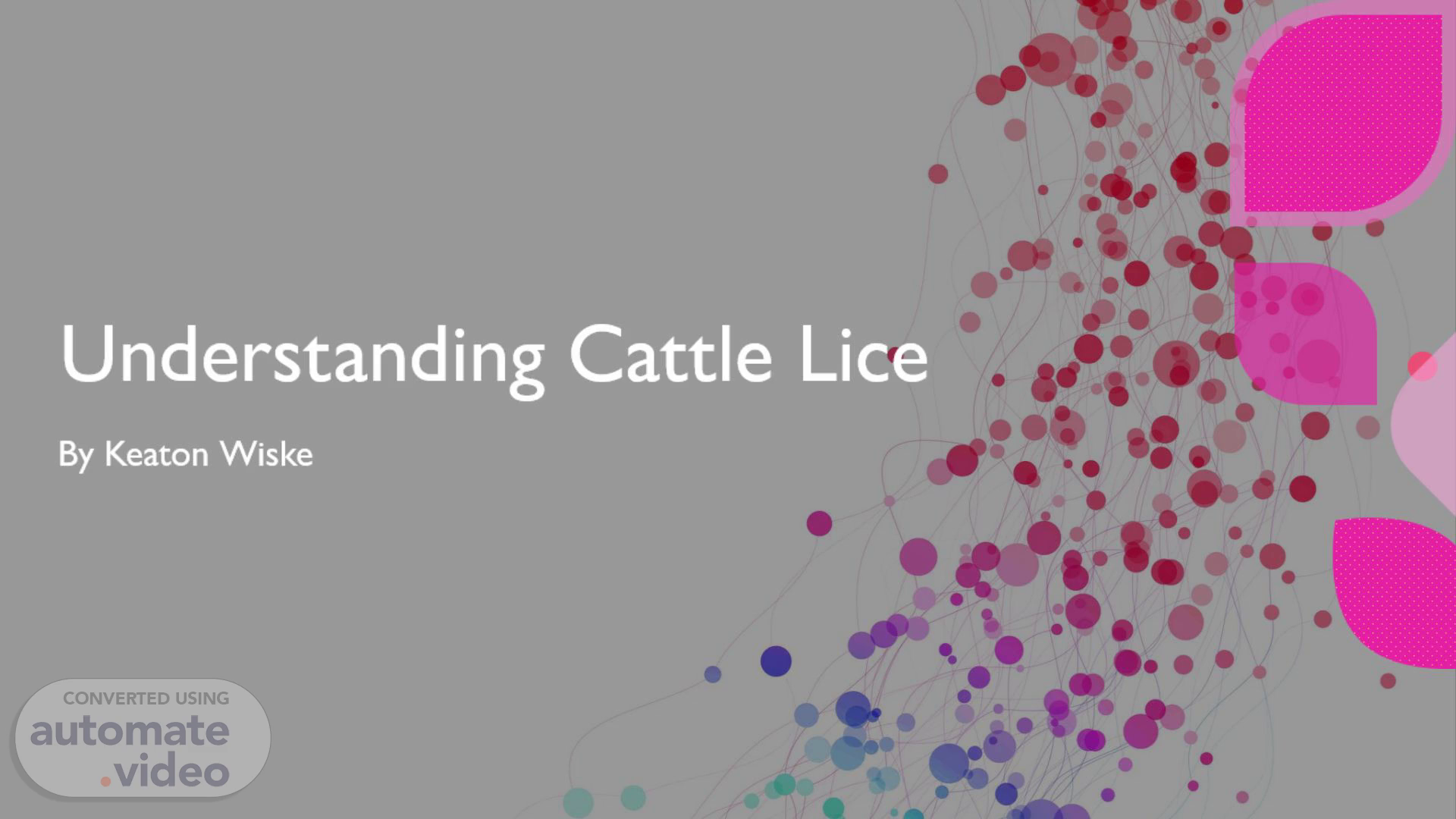
Page 1 (0s)
Understanding Cattle Lice. By Keaton Wiske.
Page 2 (7s)
[Audio] Lice are a major problem in the cattle production market today. When not managed properly severe detriment to weight gain and appearance can occur. Lice also affect all breeds and ages of cattle..
Page 3 (22s)
[Audio] It takes anywhere from 22 to 28 days for lice to go from the egg stage to the adult stage. Egg hatch time takes anywhere from 4 to 15 days depending on the species. Lice go through different nymph molting stages and the total time to complete these stages takes 4 to 15 days. Lice nymphs resemble adult lice but are smaller and lack the reproductive organs..
Page 4 (50s)
[Audio] The cattle biting louse is reddish brown and has dark bands running across the body. This is the only species of biting louse that affects cattle. These lice feed on hair, skin, and debris on the surface of the skin. Biting louse are often found on the shoulder and back but can be found on the whole body. This species also does not require a male for eggs to be fertilized. The long nosed cattle louse is about 2.5 millimeters in length and is bluish in color. It can be told apart by its long slender head. These lice are found on the dewlap, shoulders, and the sides of the neck and rump. The little blue cattle louse is 1 to 2 millimeters in length, is bluish colored, and is the smallest species of sucking lice. They are found on the dewlap, muzzle, neck, and around the eyes. Bigger populations of these lice cause major issues with cattle weight gain. The short nosed cattle louse is the largest at 3 to 5 millimeters in length. It is typically found on older cattle in the neck, dewlap, back, and the base of the tail..
Page 5 (2m 7s)
[Audio] Lice issues in cattle are the most prominent in winter. Signs of lice problems include hair loss, raw spots, and reduced weight gain. These issues can also increase the chance of cattle frostbite..
Page 6 (2m 23s)
[Audio] There are several available options for lice prevention and treatment. These include many different pour ons, injectable formulations, and self treatment devices. These pour ons and injectables often include ivermectin or moxidectin for all breeds of cattle. Synthetic pyrethroids and synergized pyrethrins are often included in beef cattle only formulations. Self treatment devices such as back rubbers, oilers, and dust bags can also be placed with effectiveness in cattle pastures. A high energy diet can be fed to combat the weight gain issues caused by lice..
Page 7 (3m 4s)
[Audio] The USDA has estimated that producers lose 125 million dollars per year to lice related issues. These money losses can be from performance, control methods, and even wear and tear on handling facilities. The university of Nebraska has said that lice can reduce weight gains by as much 0.21 pounds per day meaning less money for the producer when it comes time to sell. The hair loss and bare spots created by lice can also lead to frostbite in the winter and even cattle death..
Page 8 (3m 38s)
References Biology of lice in cattle. LiceBoss. (2023, July 5). https://liceboss.com.au/biology-of-lice/ Cattle lice. UNL Beef. (2017, January). https://beef.unl.edu/cattle-lice Ketzis, J. K. (2023, November 14). Lice in cattle - integumentary system. Merck Veterinary Manual. https://www.merckvetmanual.com/integumentary-system/lice/lice-in-cattle Lice control in cattle. MWI. (n.d.). https://www.mwiah.com/our-insights/lice-control-in-cattle Lice infestations on cattle. Agriculture and Food. (n.d.). https://www.agric.wa.gov.au/livestock-parasites/lice-infestations-cattle Lice on beef and dairy cattle. Entomology. (n.d.). https://entomology.ca.uky.edu/ef512 Lice: A wintertime threat - Oklahoma State University. Lice: A Wintertime Threat | Oklahoma State University. (2021, February 3). https://news.okstate.edu/articles/veterinary-medicine/2021/lice_a_wintertime_threat.html Schlesser, W. by H. (n.d.). Lice management for cattle. Livestock. https://livestock.extension.wisc.edu/articles/lice-management-for-cattle/.